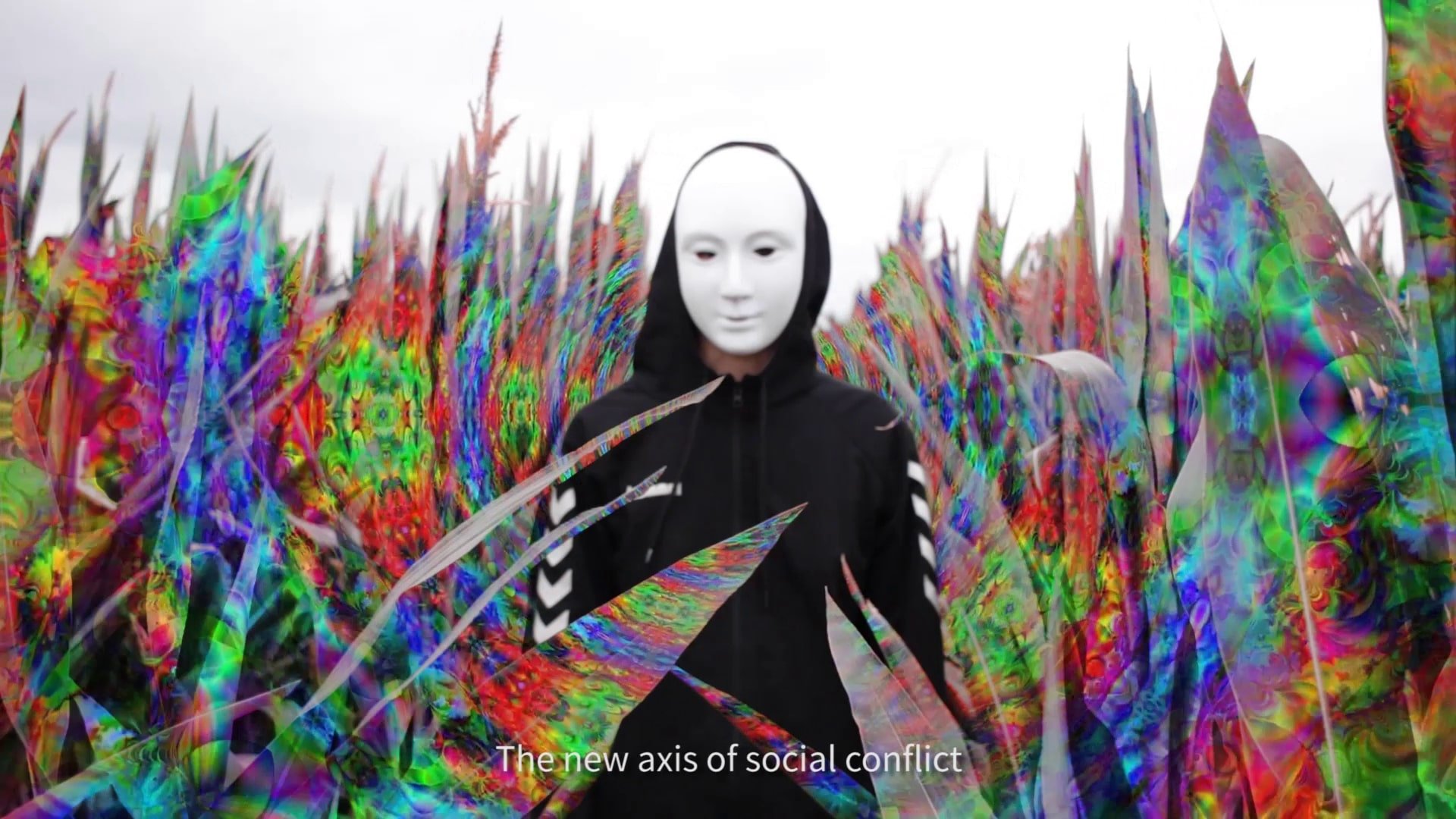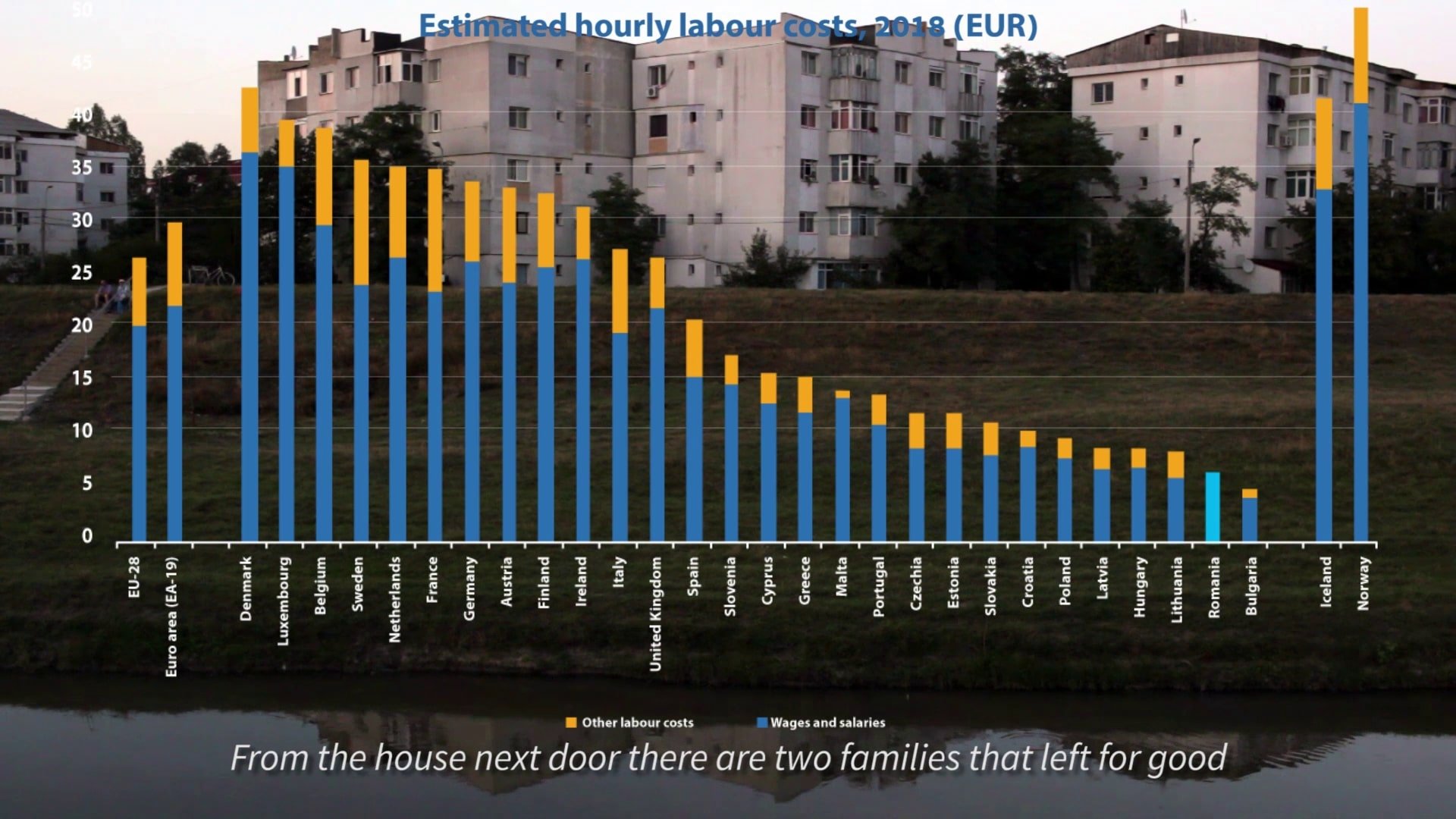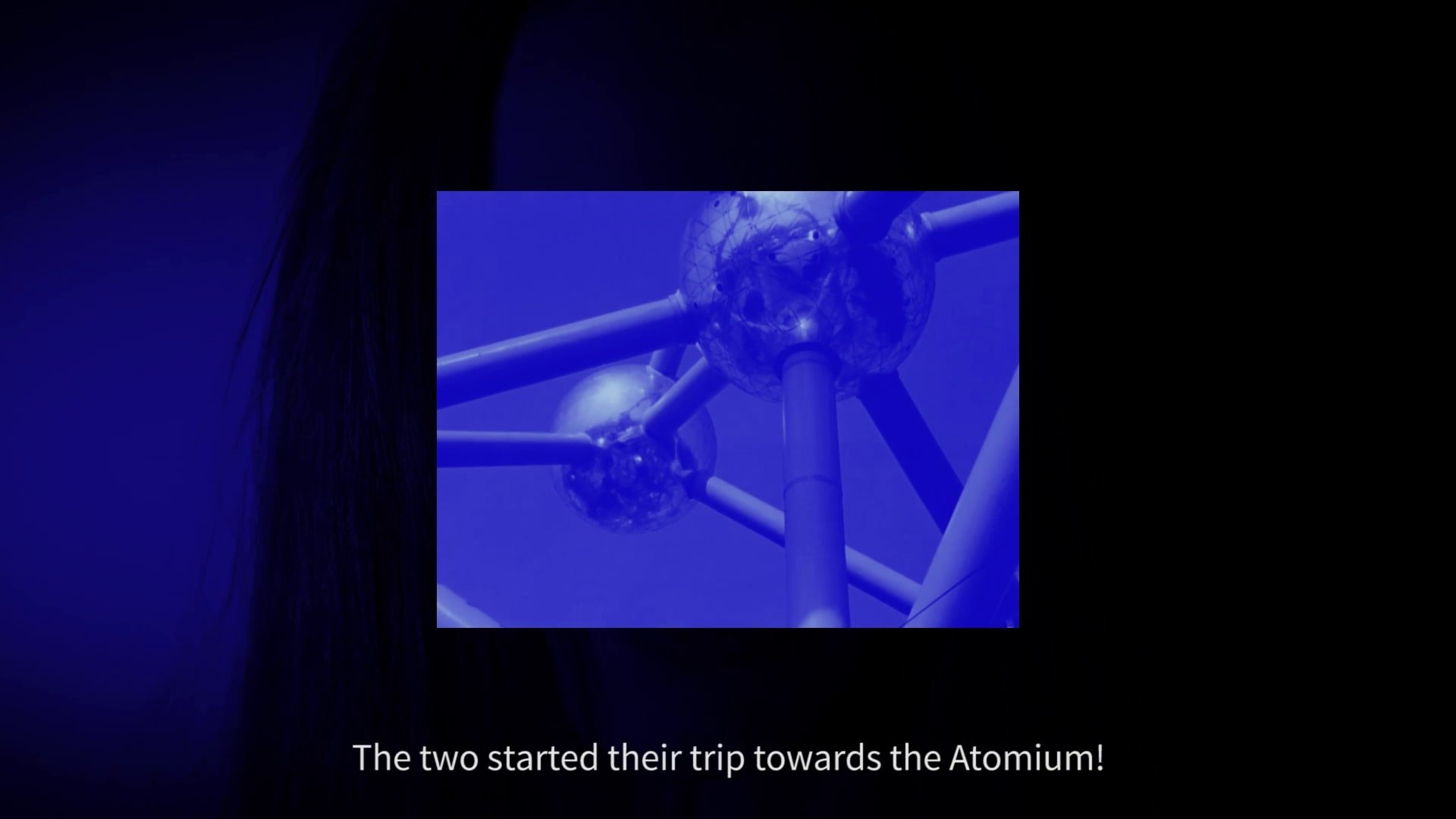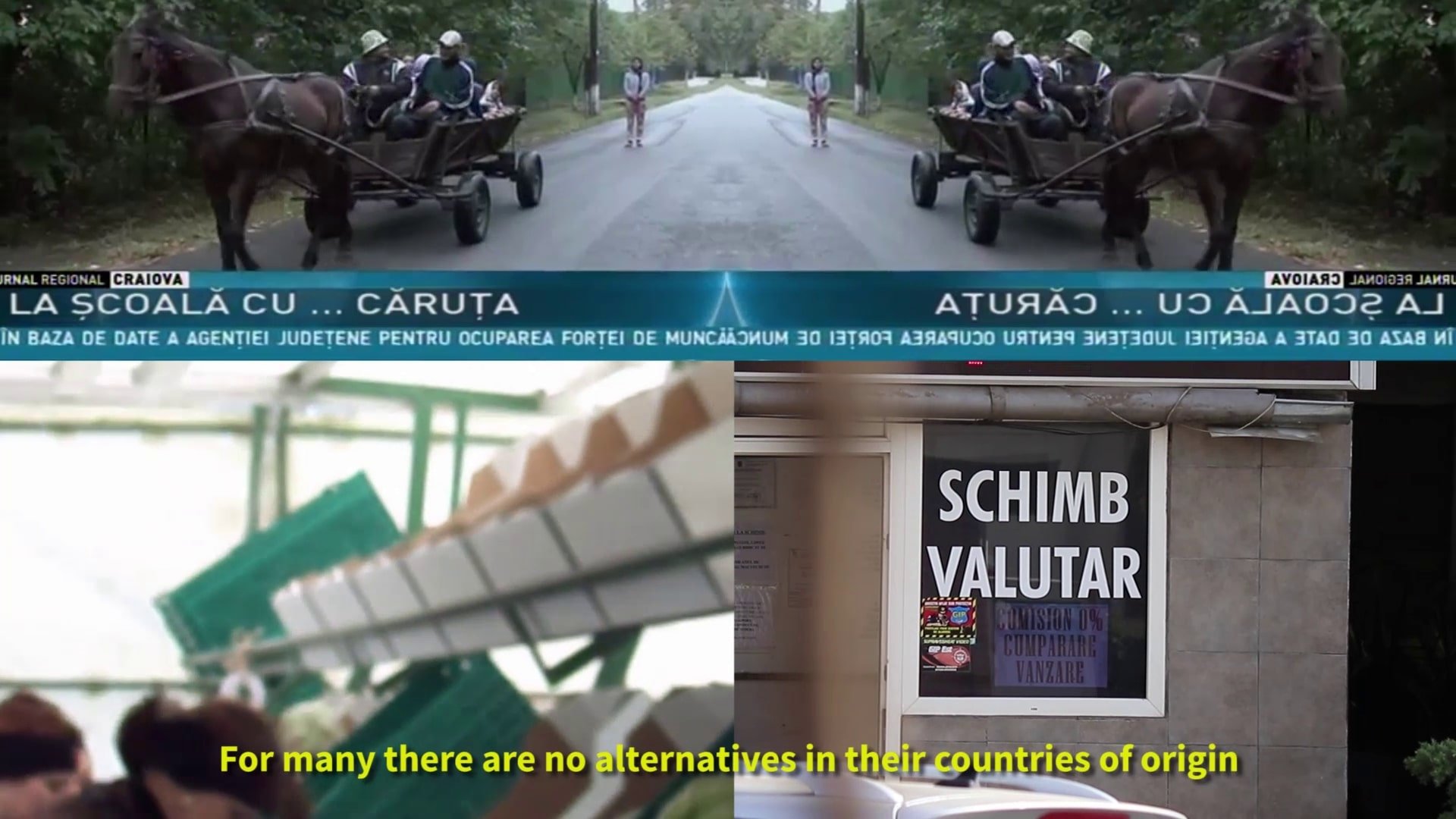“The future is not heavy/ the future can be soft” Evagoria Dapola on SABA
We live in the same time zone or almost the same time zone, and this is etched in our shared experience, raised in countries severely affected by the financial crisis. Being from Greece & Cyprus, I can understand SABA's Central Europe & Balkan-centered practice through a deep personal understanding of migration and displacement. For all of us, it is early evening, and we see each other through a screen, meeting for the first time. Silvia Amancei and Bogdan Armanu smile as they introduce themselves, and I cannot help but feel a certain familiarity. Although I was only recently introduced to their work, I recognize its subject is rooted in realities particular to people from a country located in-between-everywhere. SABA exudes hope while reflecting on their reasons for becoming artists exposing migrational economies' complex socio-political structures and how they impact their practice and careers. To know them means unpacking and understanding the political rhetoric inherent in their art.
Their practice is rooted in researching artistic methods framed by contemporary writings from the field of critical theory and transmedia Aesthetic investigations. Their artworks gravitate around utopian imaginaries, investigating labor/immaterial labor concepts and futures/histories/ideologies, focusing on deconstruction, denouncing the (semio) capitalist society and its social ruptures. Migrating between video, photography, painting, and performance, their approach shifts the dimension of our socio-political landscape, allowing the emergence of hidden stories of environmental and social transformation.
(How to) Migrate towards a Future? (2019) is a video essay that re-examines the utilitarian vision of labor, a reserve of human resources, often used to justify technological solutionism. Through a fluid time-based medium, the artists imagined a story for a film in which two people would embark on a search for the meaning of life. They offer an intimate look at parallel socioeconomic realities, violence, exploitation, and sadness. "The characters were unrealized, and they were supposed to find the causes of today's messy reality."
Following entangled narratives rather than a hero's journey, the work manages to unpack the complexities of socioeconomic migration through the maximalist perspective of a generation both directly and indirectly impacted by it. Succinct and packed with information, (How to) Migrate towards a Future? can seem overwhelming at first glance. It provides a window into a country grappling with acute crises within a specific local framework. The work presents outcomes of constantly shifting borders due to economic hardship and disregarding migrants' complex and mutable realities, whose ever-shifting identities are primarily based on labor. Thus, the work opens a discussion on identity management. Populated by statistics and research that speak to the condition of the victims displaced by a collapsed economy, it forces us to stimulate post-growth narratives. However, the work becomes more ecumenical as the economic hardship, the climate catastrophes, or political conflicts are without a country. The subjects of (How to) Migrate towards a Future? become stateless, manifesting the productivity of dissonance: the only two recognizable protagonists are masked figures; they exist within data, research, and newsfeeds while hovering in seemingly unrelated fields. Unearthing thus, connections between Europe's handling of its own migrational and political crisis, urbanist realities, and the capitalist ideals of its metropolises.
(How to) Migrate towards a Future? exist in the intersection of art and DIY documentary. The different values and perspectives offered here interplay with competing narratives. This is true of SABA's work historically, skillfully using filmic tropes to reveal a broad spectrum of realities without over-simplifying or getting lost in detail. The work reflects on complexity, showcasing the anxiety-inducing conditions of a society that has constantly been reinventing itself, regenerating, and re-patriating through a point of aesthetic saturation. Doing so offers a sense of clarity, highlighting critical truths and facts. Suppose one looks at their historical practice based on the circulation of people, goods, and information placed within the spectrum of Eastern Europe's reality. SABA realizes the importance of discussing the transformative impact of these realities on our notion of national and racial identities. (How to) Migrate towards a Future?stems from a deep understanding of what migration is, it puts the political and social issues buried under the layers of capitalism and neoliberalism front and center.
Exploring thus SABA's grassroots through different angles, the work becomes a multi-narrative account of the experience of the working class. The multi-vocal narratives present themselves not only through varied use of visual materials, ranging from found footage to interlinked visions of the artists, revealed through sound and narration but also through the discourse produced by speech itself. The digital voice narrates our experience, and sometimes we disconnect with the artists present in the work through their voices, critically revisiting language itself. The artists' bodies serve as protagonists becoming representatives of the general audience.
The presence of the artists' voices in the work creates a sense of intimacy, a depth that derives from solid personal experiences. The intensity of the dialogue activates their surroundings, the situations of their localities, their experiences, and their audiences. The digital voice, a machine-created narration, and a text-to-speech program are somewhat reassuring. It sounds severe yet manages to bring us back to a reality where technology is a significant component of our political realities. The video essay acquires a certain level of credibility, as the information is delivered in English, spoken with a proper British accent instead of a rough, Eastern-European one. It institutionalizes the presented information, sounding like the documentaries of our childhood. It is a tool that enhances the divide between them and us. It highlights the dichotomy between the artist/narrator. The political jargon becomes the white noise of our experience, reminiscent of how it operates in real life when it is primarily taken for granted and left unexamined. We are accustomed to this language in the news cycles, as it narrates the misery of migrants the world over. We know what is happening; we have become desensitized. We consider those conditions beyond our control; the suffering embedded in the mediated imagery is so great that we feel helpless, unable to fix such realities. The guiding voices of the artists ask us to pay attention. They are here as reminders that we live in an age of hyperconnectivity, where the perverse implications of media echo chambers are ever-more boisterous.
The labor migrants create migrant imaginaries and new labor imaginaries. (How to) Migrate towards a Future? reveals a moment of entropy. Even if within a particular local context, the work creates a sense of "placelessness ." In the Post-Soviet world, the formal socialist states of Eastern Europe offer an ever-fruitful ground for cultural productions, often misappropriated by
Western markets. By providing a unique account of displacement, the work explores the visual response to current and past migrations, whether these are ideas, people, or even labor. This mass movement of peoples and the rise of planetary-scale automation, combined with the international political crises of right-wing extremism, are shifting how we experience and perform our national, personal, cultural, and labor identities.
(How to) Migrate towards a Future? is increasingly relevant, inviting us to challenge the dominant narratives about labor, growth, and progress, providing questions that nudge us towards a shift away from the overexploitation of people and energy through sweat and fear, which our societies at large depend on. The video makes us wonder whether the State as we know it is coming to an inevitable end, where the exchange of migrant labor, the erasure of national identities, and the political extremism are creating a trajectory of a Stateless, Placeless machine that only obeys to capitalistic demands. Yet, the work is not filled with rage or fear; it weaves together a cross-narrative portrait of current realities based on research, statistics, recent news, political trends, and testimonies. However, these realities may produce a sense of rage and fear in the audience. As the video speaks, these feelings remain silent. As we stay silent, these feelings speak. We often cannot shake rage and fear from our political, social, and financial realities; these feelings are deeply associated with past and present events unfolding silently in the background of everyone's lives. The work demands audiences to remember and reflect on the power of the world we live in and its urgent need for change.
(How to) Migrate towards a Future? strives to keep new stories of the artists' homeland alive through a careful method of storytelling, a practice of documenting, compositing, and recollecting. Doing so keeps the reality of such stories strong, helping the personal yet collective stories be understood through an inward gaze, forcing us to acknowledge our deep feelings about culture, society, and what it means to belong to an unfair system. The human need for belongingness is the root of contemporary capitalism, a (re)production of capital extraction. Even nationalistic sentiments can be a product or by-product of capitalism. The video also asks us to consider our responses to our own feelings and reconsider the validity of our fixed notions.
SABA is among a generation of artists who create artworks that focus on disrupting the socio-economical, cultural, and Aesthetic fields; the artists become the platform through which found data is shared. Issues are stressed, and reality is reinterpreted with new visual languages, semiotic references, and semantic terminologies. These frameworks are critical and suggestive of new forms of resistance. Their video work is materially treated like paper, and their montage is a collage, offering an unfiltered view of the attention economy and our lack of hope for the future. Its narrative structure lends a sense of viscosity to the rhetorical and discursive spaces of contemporaneity and nowness layered within the narratives. Silvia and Bogdan are partly constructing narratives on archival time by simultaneously pursuing watching, reading, and writing processes. Such narratives become fields for constructing bonds and identities. The artists sometimes appear in the videos wearing simple white masks, reminiscent of masks worn in thrillers or in protests to partly conceal identity. However, the sound of their human voices remains audible, stand in as the voice to the displaced or placeless, those between labor markets, countries, and cultures, within international migration flows.
Another impactful quality of the video work is its ability to create a discourse about the role of the internet as a borderless archive: A Physical and Digital diasporic space of migration, facilitating the creation of imaginary communities. In so doing, (How to) Migrate towards a Future? escapes institutional barriers and manages to work across and against nation-states and continental borders, foregrounding the mass-capitalization of our culture and autonomous knowledge production. The work is also rooted in an understanding that migration, labor, economy, and politics become cultural subjects only when the narratives point at people looking to experience a better future. Knowledge and identities, rituals and institutions, and discourses about class, race, and ethnicity migrate across media and become intersectional visions of the present and future.
Our world swarms with technological mediation, creating a sense of alienation. Our lives are interlaced with abstraction and complexity. Through our alienated condition, we find the ability to free ourselves from the burden of immediacy. (How to) Migrate towards a Future? is a critique of our current concept of the future and how its construction should involve less alienation. It's an urgent call for a much-needed understanding that nothing should be accepted as immutable. Using both found and fabricated video content, the work opens the discussion on non-fixed material conditions and social forms, discussing dialectical machines and co-opting criticism to tackle the engulfing power of capitalism.
Conceptually utilizing migration and economies of labor into a fresh way of structuring information and non-material resources, (How to) Migrate towards a Future? allows for new regimes of artmaking to emerge. We can read the reality of our socio-political future through such structures and live the impending present. The subjects of this work, the countries, the people, who have been through this extortion of capitalization of human energy, the ones who are financially unable and might be hungry tomorrow, might not be able to think about any future. Thus, by pursuing questions around the transformative quality of spaces and geographies in a present where subjects are no longer bound to their identities or specific places, the work highlights the formation of dislocated subjectivities due to global migration, politics, economies, and technology. We are already experiencing the future we were talking about as children, with all these new technologies that enable our craziest sci-fi fantasies, but it is gloomier than we imagined. The future in (How to) Migrate towards a Future? is not fixed; it's not linear nor quantum. It is filled with uncertainties and unrest and results from the capitalist apocalypse we are now living in. Experiencing the work, one cannot help but wonder: What would it take to reclaim the world as a space for intimacy, creativity, for existing beyond labor economies, in new forms of togetherness, abolishing all forms of alienation? A softer economy means a gentler world. What if migration simply meant to be, experience, and gain, like quietly sharing a table at a library with strangers? We are all here for the same purpose, existing individually yet collectively, learning, becoming, and forming at the same time at different speeds. This would mean that we would be seizing the collaborative potential of migrant economies, new technologies, and the internet, revealing that our current conditions are still explorable rather than bound to strict linear realities. Deeply interlinking our experiences and developing relationships is necessary to re-imagine a viable, softer, and more democratic collective future.
SABA Silvia Amancei and Bogdan Armanu (b. 1991, Iași and Timișoara) is an artist couple working together since 2012. Their artistic practice could be positioned at the border between social studies and visual art, researching for methods and examples where art and artistic means can be instrumentalized in order to overexcite the ability to look beyond capitalism and create a (common) future. Among their recent solo shows are “s.a.b.a 1979- ####”(2020, Ljubljana, SI), “It Was Always In Plain Sight” (2020, Bucharest, RO), “If Then What After” (2019, Baden, AT), “What Past? What Future?” (2017, Lintz, AT), “Depression, Uncertainty and other symptoms of Mortality” (2016, Lodz, PO), while their works have been present in many group exhibitions among which “Rewriting Our Imaginations” (2020, Basel, CH), “Go, Stop, Stay” (2019,Debrecen, HU), “STRIKE GENTLY AWAY____” (2019, Salzbutg, AT), “Displacement and Togetherness”, (2019, Brussel, BE), to name a few.






